In the dynamic world of compact cars, two names often stand out for differing reasons: the Ford Puma and the Renault Clio. As consumers seek stylish yet functional vehicles, both models offer a unique blend of technical prowess and innovative features. In this article, we’ll explore the technical specifications, innovations, and overall performance of these two popular models.
Ford Puma vs Renault Clio – Which model is better for everyday use?
Compare performance, boot capacity, efficiency and price at a glance.
Find out which car is the better choice for you – Ford Puma or Renault Clio?
Body and Design: SUV vs. Hatchback
The Ford Puma presents itself as a compact SUV, offering a higher ride height and a commanding view of the road. With a length of approximately 4186 to 4226 mm, a width of 1805 mm, and a height of 1550 mm, it comfortably accommodates five passengers and boasts significant trunk capacity of 456 liters. This SUV appeal, combined with sporty aesthetics, makes the Puma stand out in urban environments.
On the other hand, the Renault Clio remains faithful to the hatchback format. Its compact size (4053 mm in length and 1798 mm in width, with a height of 1440 mm) makes it an ideal choice for city driving and parking in tight spaces. Despite its smaller dimensions, the Clio offers a functional trunk capacity ranging from 301 to 391 liters depending on the configuration, balancing style with practicality.
Engine and Performance: Power and Efficiency
When it comes to engine options, the Ford Puma is equipped with petrol MHEV (mild hybrid electric vehicles). The Puma offers power outputs that range from 125 to 160 HP. Its turbocharged 1.0-liter engine provides lively performance with acceleration from 0 to 100 km/h in as little as 7.4 seconds for the more powerful variants. With consumption ratings between 5.4 and 6 L/100km, the Puma is relatively efficient for an SUV, emitting CO2 levels ranging from 121 to 136 g/km.
The Renault Clio boasts a more diverse engine lineup, including full hybrid, petrol, and LPG options, with power outputs ranging from 67 to 143 HP. Its full hybrid model not only enhances fuel efficiency (as low as 4.3 L/100km) but also helps achieve lower CO2 emissions, starting at just 97 g/km. The acceleration can reach 100 km/h in as fast as 9.3 seconds, proving the Clio is no slouch on the road.
Transmission and Driving Dynamics
Both vehicles feature front-wheel drive configurations, making them nimble and responsive. The Ford Puma offers either a manual gearbox or an automatic dual-clutch transmission, catering to personal preferences for driving dynamics. Meanwhile, the Renault Clio incorporates automatic, manual, and even a CVT option for its hybrid model, providing versatility for different driving styles.
Safety and Technology: Innovations Galore
As driving technology evolves, both models prioritize safety and connectivity. The Ford Puma is equipped with Ford's latest driver-assistance features, including adaptive cruise control, lane-keeping assist, and a comprehensive infotainment system with smartphone integration.
Meanwhile, the Renault Clio steps up to the plate with a user-friendly infotainment system, incorporating a larger touchscreen and seamless smartphone connectivity. With advanced safety features such as emergency braking and blind-spot monitoring, the Clio ensures a secure driving experience.
Conclusion: The Ideal Companion
Choosing between the Ford Puma and Renault Clio largely depends on consumer needs. The Puma, with its sporty SUV allure and mild hybrid technology, appeals to those seeking a higher driving position and extra cargo space. Conversely, the Clio shines with a variety of efficient engines, compact design, and advanced tech features, ideal for urban dwellers.
Ultimately, both models embody innovative engineering and stylish design, showcasing the capabilities of modern automobiles. Whichever you choose, both the Ford Puma and Renault Clio promise to deliver a blend of performance, comfort, and technology.
Here’s where it gets real: The technical differences in detail
Costs and Efficiency:
Price and efficiency are often the first things buyers look at. Here it becomes clear which model has the long-term edge – whether at the pump, the plug, or in purchase price.
Renault Clio has a clearly advantage in terms of price – it starts at 16600 £, while the Ford Puma costs 24800 £. That’s a price difference of around 8186 £.
Fuel consumption also shows a difference: Renault Clio manages with 4.30 L and is therefore clearly perceptible more efficient than the Ford Puma with 5.40 L. The difference is about 1.10 L per 100 km.
Engine and Performance:
Power, torque and acceleration are the classic benchmarks for car enthusiasts – and here, some clear differences start to show.
When it comes to engine power, the Ford Puma has a somewhat edge – offering 168 HP compared to 143 HP. That’s roughly 25 HP more horsepower.
In acceleration from 0 to 100 km/h, the Ford Puma is evident quicker – completing the sprint in 7.40 s, while the Renault Clio takes 9.30 s. That’s about 1.90 s faster.
In terms of top speed, the Ford Puma performs to a small extent better – reaching 210 km/h, while the Renault Clio tops out at 174 km/h. The difference is around 36 km/h.
There’s also a difference in torque: Ford Puma pulls distinct stronger with 290 Nm compared to 205 Nm. That’s about 85 Nm difference.
Space and Everyday Use:
Beyond pure performance, interior space and usability matter most in daily life. This is where you see which car is more practical and versatile.
Both vehicles offer seating for 5 people.
In curb weight, Renault Clio is a bit lighter – 1124 kg compared to 1316 kg. The difference is around 192 kg.
In terms of boot space, the Ford Puma offers clearly perceptible more room – 523 L compared to 391 L. That’s a difference of about 132 L.
In maximum load capacity, the Ford Puma performs a bit better – up to 1283 L, which is about 214 L more than the Renault Clio.
When it comes to payload, Ford Puma a bit takes the win – 469 kg compared to 406 kg. That’s a difference of about 63 kg.
Who wins the race?
The Ford Puma proves to be dominates this comparison and therefore becomes our DriveDuel Champion!
Ford Puma is the better all-rounder in this comparison.
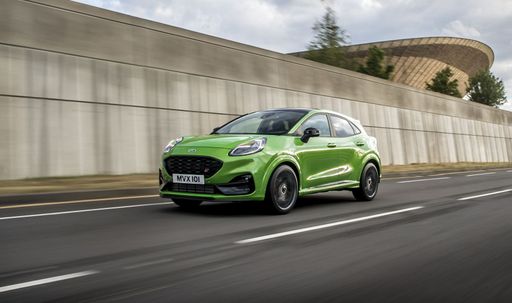 @ Ford Motor Company / Ford Media Center
@ Ford Motor Company / Ford Media Center
Ford Puma
Ford Puma
The Ford Puma is a cheeky compact crossover that blends sporty styling with city-friendly practicality, giving drivers a surprisingly fun and composed ride. With clever storage tricks and a lively personality, it’s a smart pick for buyers who want enjoyment without fuss.
details @ Ford Motor Company / Ford Media Center
@ Ford Motor Company / Ford Media Center
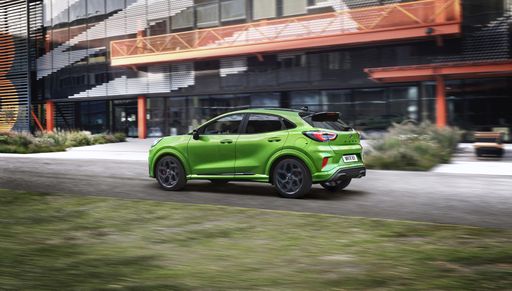 @ Ford Motor Company / Ford Media Center
@ Ford Motor Company / Ford Media Center
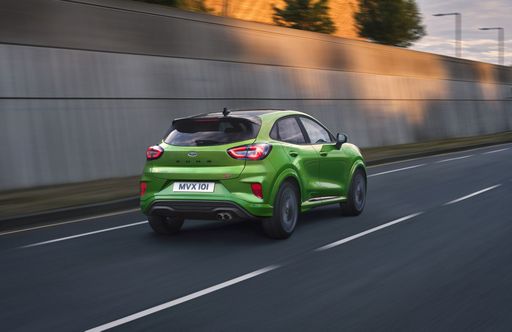 @ Ford Motor Company / Ford Media Center
@ Ford Motor Company / Ford Media Center
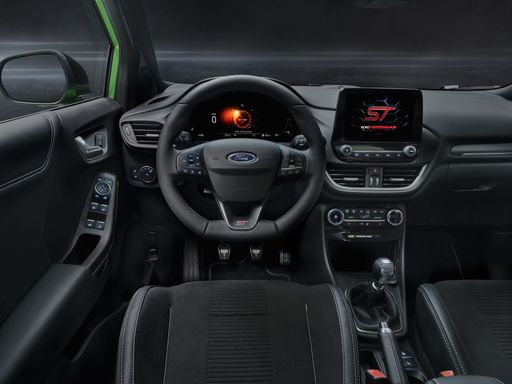 @ Ford Motor Company / Ford Media Center
@ Ford Motor Company / Ford Media Center
Renault Clio
The Clio punches above its weight with chic French styling and a surprisingly grown-up cabin that makes city driving feel effortlessly stylish. It's an easy-to-live-with choice that keeps ownership simple and even manages to put a grin on your face when the traffic gets dull.
details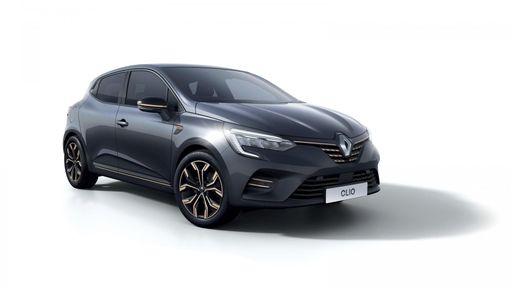 @ Renault Group Media
@ Renault Group Media
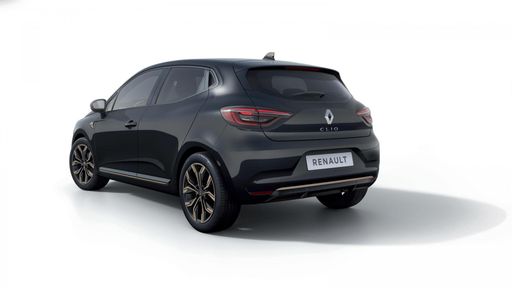 @ Renault Group Media
@ Renault Group Media
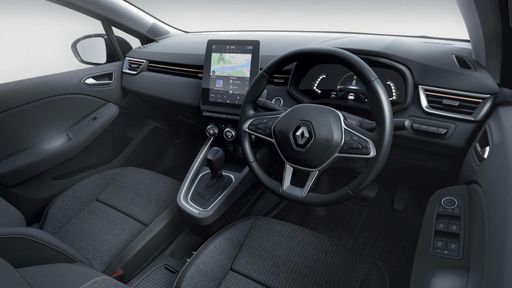 @ Renault Group Media
@ Renault Group Media
 @ Ford Motor Company / Ford Media Center
@ Ford Motor Company / Ford Media Center
|
 @ Renault Group Media
@ Renault Group Media
|
|
|
|
Costs and Consumption |
|
|---|---|
|
Price
24800 - 36300 £
|
Price
16600 - 23000 £
|
|
Consumption L/100km
5.4 - 5.9 L
|
Consumption L/100km
4.3 - 5.3 L
|
|
Consumption kWh/100km
13.1 - 13.9 kWh
|
Consumption kWh/100km
-
|
|
Electric Range
361 - 376 km
|
Electric Range
-
|
|
Battery Capacity
43 kWh
|
Battery Capacity
0.60 kWh
|
|
co2
0 - 135 g/km
|
co2
97 - 121 g/km
|
|
Fuel tank capacity
42 L
|
Fuel tank capacity
39 - 42 L
|
Dimensions and Body |
|
|---|---|
|
Body Type
SUV
|
Body Type
Hatchback
|
|
Seats
5
|
Seats
5
|
|
Doors
5
|
Doors
5
|
|
Curb weight
1316 - 1563 kg
|
Curb weight
1124 - 1331 kg
|
|
Trunk capacity
456 - 523 L
|
Trunk capacity
301 - 391 L
|
|
Length
4186 - 4226 mm
|
Length
4053 mm
|
|
Width
1805 mm
|
Width
1798 mm
|
|
Height
1550 - 1555 mm
|
Height
1440 mm
|
|
Max trunk capacity
1216 - 1283 L
|
Max trunk capacity
979 - 1069 L
|
|
Payload
367 - 469 kg
|
Payload
398 - 406 kg
|
Engine and Performance |
|
|---|---|
|
Engine Type
Electric, Petrol MHEV
|
Engine Type
Full Hybrid, Petrol
|
|
Transmission
Automatic, Manuel
|
Transmission
Automatic, Manuel
|
|
Transmission Detail
Reduction Gearbox, Manual Gearbox, Dual-Clutch Automatic
|
Transmission Detail
Automatic Gearbox, Manual Gearbox
|
|
Drive Type
Front-Wheel Drive
|
Drive Type
Front-Wheel Drive
|
|
Power HP
125 - 168 HP
|
Power HP
67 - 143 HP
|
|
Acceleration 0-100km/h
7.4 - 9.8 s
|
Acceleration 0-100km/h
9.3 - 17.1 s
|
|
Max Speed
160 - 210 km/h
|
Max Speed
160 - 174 km/h
|
|
Torque
170 - 290 Nm
|
Torque
95 - 205 Nm
|
|
Number of Cylinders
3
|
Number of Cylinders
3 - 4
|
|
Power kW
92 - 124 kW
|
Power kW
49 - 105 kW
|
|
Engine capacity
999 cm3
|
Engine capacity
999 - 1598 cm3
|
General |
|
|---|---|
|
Model Year
2025
|
Model Year
2023 - 2025
|
|
CO2 Efficiency Class
A, D
|
CO2 Efficiency Class
C, D
|
|
Brand
Ford
|
Brand
Renault
|
Is the Ford Puma offered with different drivetrains?
The Ford Puma is offered with Front-Wheel Drive.
The prices and data displayed are estimates based on German list prices and may vary by country. This information is not legally binding.
